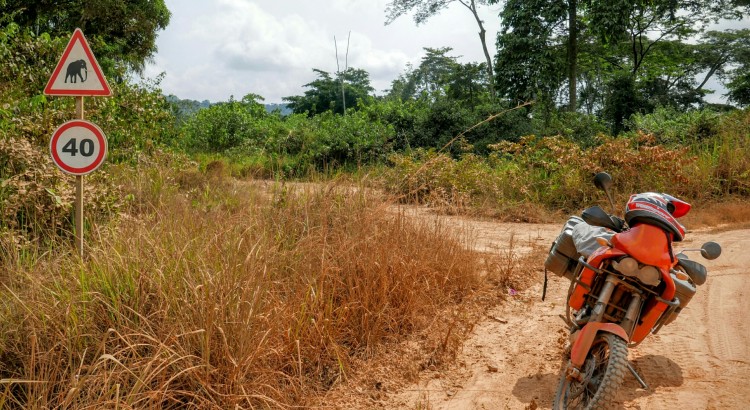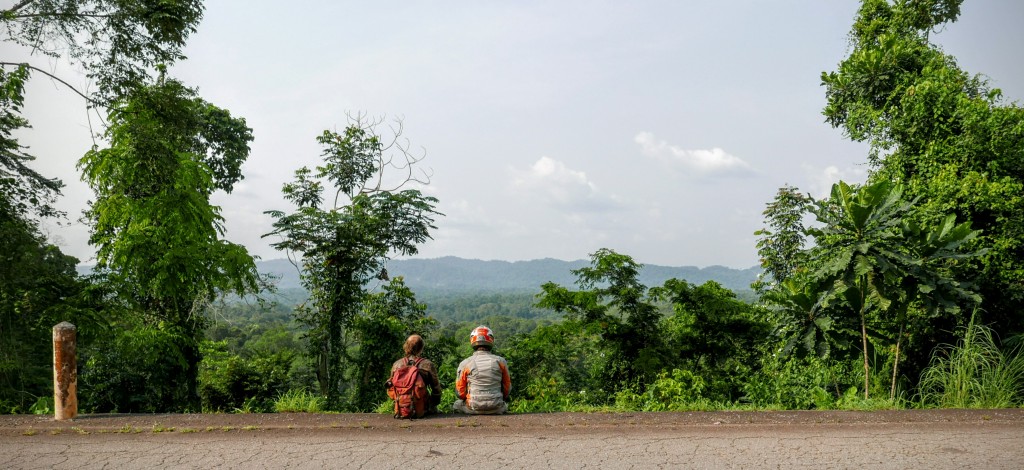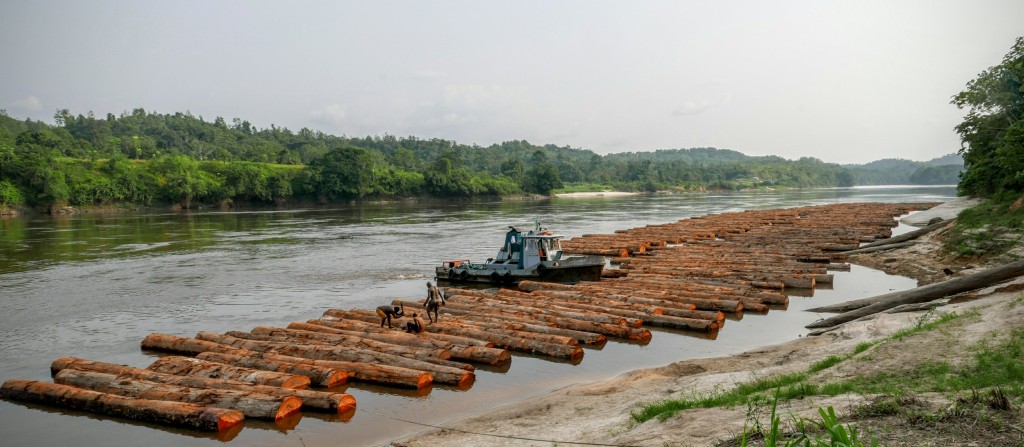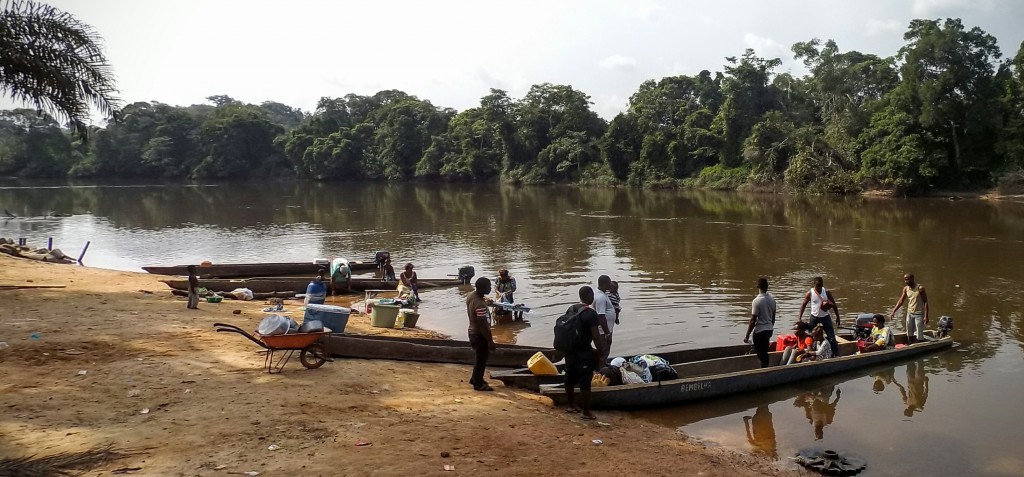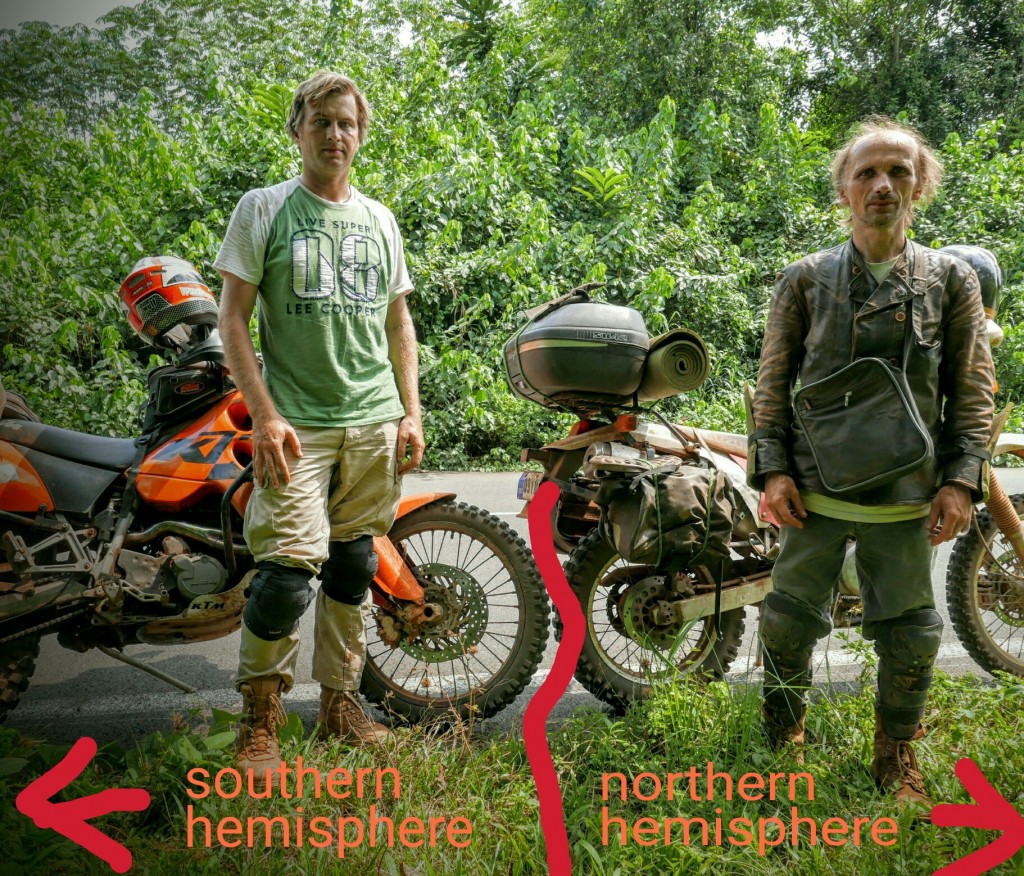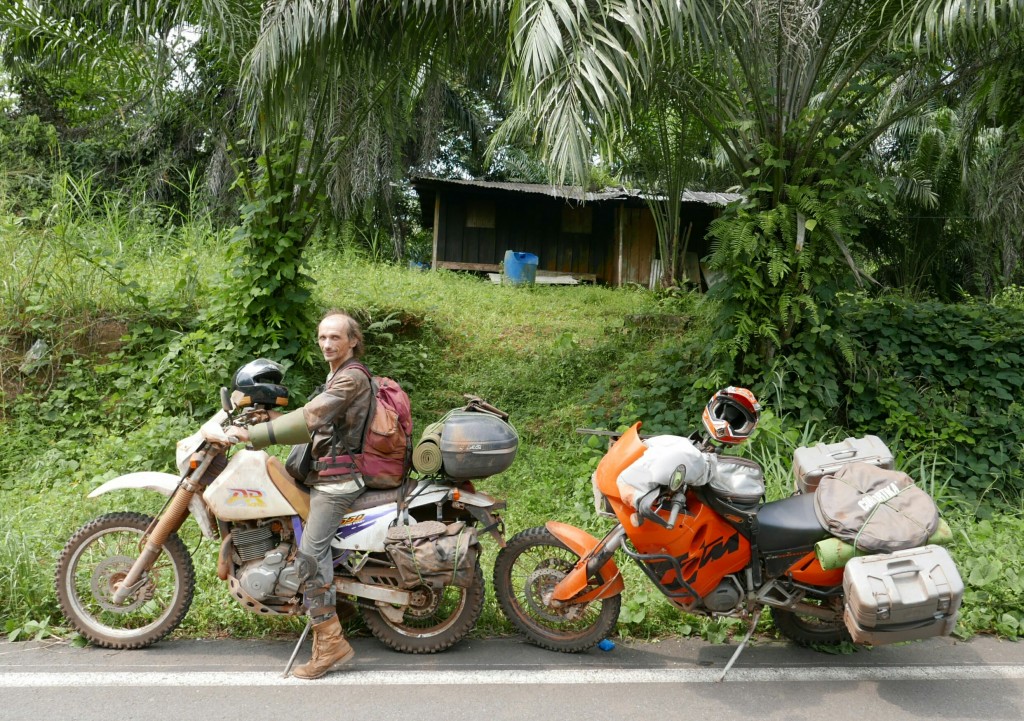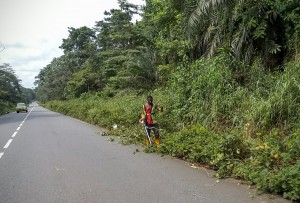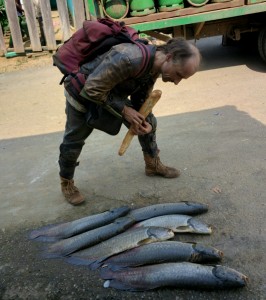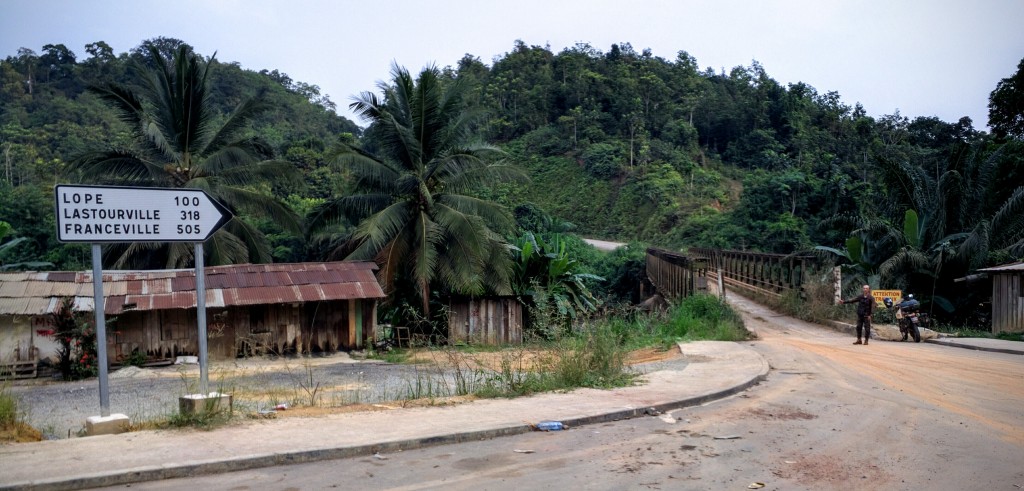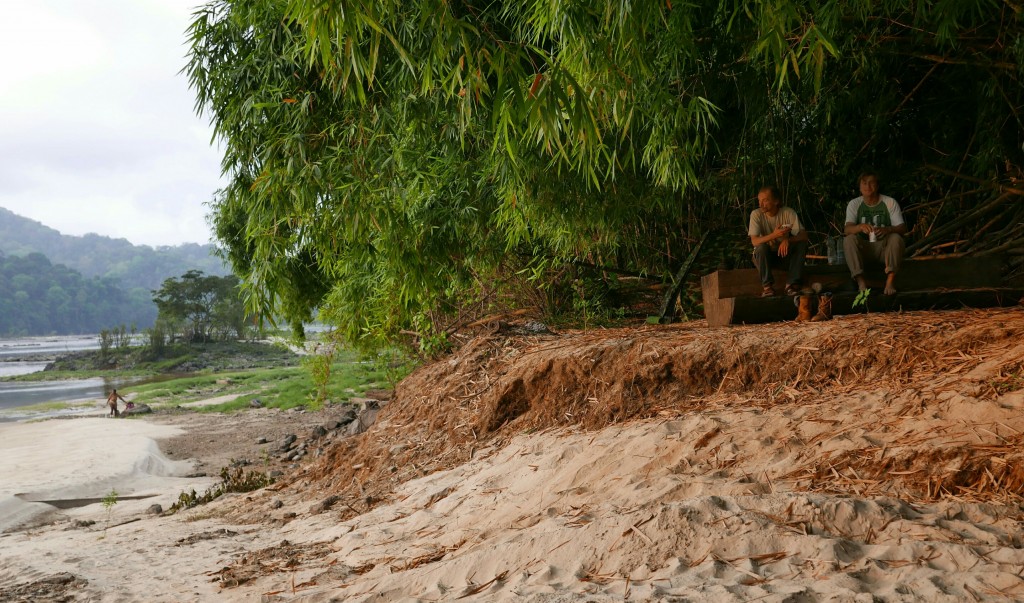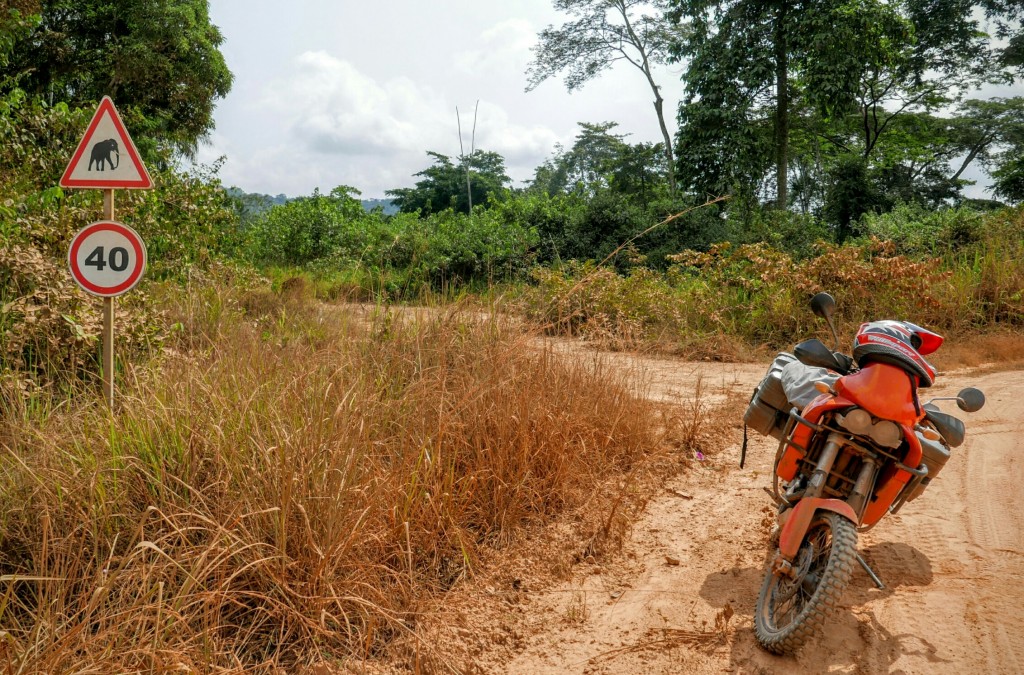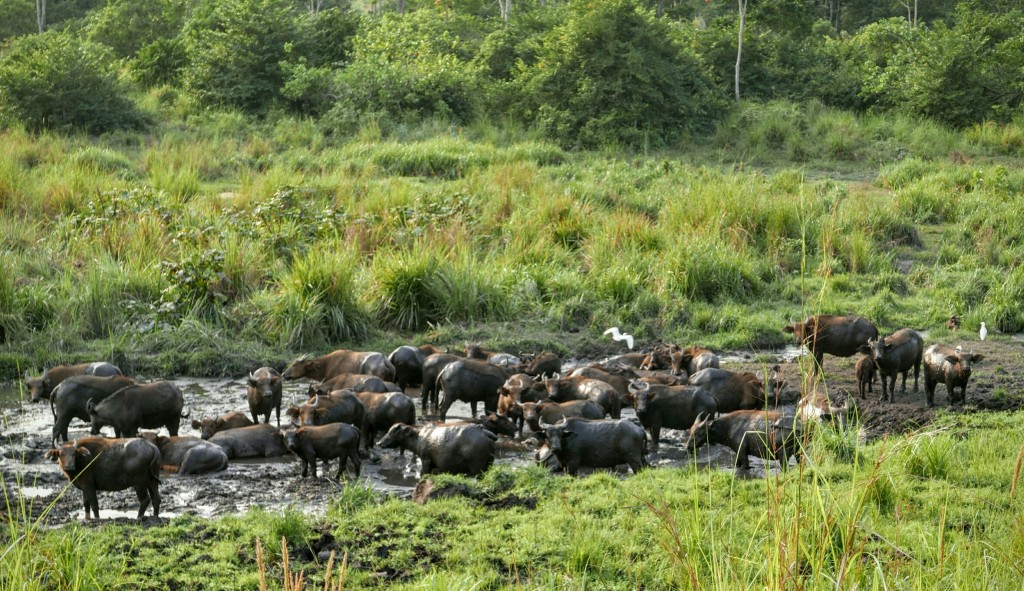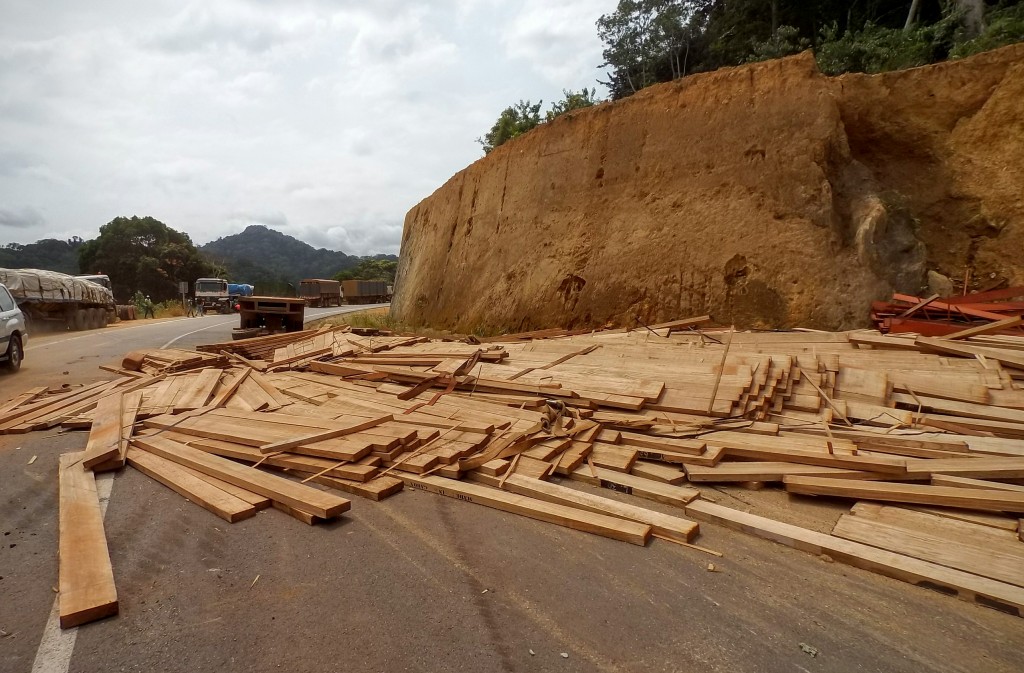Libreville, the capital with 300,000 people, is like a little island built on the river estuary. There is one shitty road connecting it with the rest of Gabon, one way in and out of the city. Apparently the second largest city, Port-Gentil, doesn’t even have a single road getting to it and only way to move in and out is by boat. In spite of its isolation, or perhaps thanks to it, Libreville feels quite relaxed and European.
Didn’t think I could appreciate a good shower as much. The hotel was very cute but quite expensive – €80 per night. Think I could have paid €100 just for the shower and the use of the washing machine. There was just one complication – it was impossible to clean the african dirt from under the finger nails. So we had to stay put for 2 days to wait until the fingernails grow out and the dirty bits can be cut off.
We have only one job to do in Libreville, find a solution for the bikes, when we fly out on Sunday. I’ve already gotten contacts of a Frenchman called Wilfred, who runs a moto and jet shop near the harbour. Other travellers have mentioned him and so did the local moto club people. He agrees to put our bikes in his back yard for 12 months, but warns that due to the incredible humidity they’re going to rust like old Peageot 203. Someone who had left his bike in Libreville for 4 months had the piston rust into the cylinder and the engine had to be rebuilt. We’ll figure something out. Now we have until Friday to get to know Gabon.
There are 13 conservation areas and some pretty cool wildlife in Gabon, but studying the map brings us to one reality – there are virtually no roads and everything is far as hell. Although there are roughly the same number of people here than in Estonia, the land area is 5 times as much. Boats are more useful than cars in this country and when you see villages on the map, they are connected by rivers, not by roads. There is one park – Lope Reserve, which is connected by road and in achievable distance of 360km. We pack up and go.
Heading south on that only paved road in the country, I suddenly recognise the roadside bush. I’ve seen the same roadbend and the bush in Rebaseonu blog, where he recorded the crossing of the equator. Boom, we’re here.
 I’m not planning to hang out on the equator any time soon again, so we took time to carefully record that we’re accurately on the spot using the compass on Juka’s iPad.
I’m not planning to hang out on the equator any time soon again, so we took time to carefully record that we’re accurately on the spot using the compass on Juka’s iPad.
Crossing the equator is a non-event for Gabonese, there are no marks on the road and no souvenire shops, just bush.
However, just on the very spot of the equator there is one hut. Here lives the equator keeper, looking after the magical line. He wasn’t home.
 The spot I remembered from the blog was about 50m north of the equator and it’s keeper’s hut. Just to bring back some memories for Rebaseonu, we reenacted the picture he took with Helga in 2006 now with Kotilda and Suusi. The jungle has taken over more, in ten years the old trees are covered with new trees and the road markings have worn off.
The spot I remembered from the blog was about 50m north of the equator and it’s keeper’s hut. Just to bring back some memories for Rebaseonu, we reenacted the picture he took with Helga in 2006 now with Kotilda and Suusi. The jungle has taken over more, in ten years the old trees are covered with new trees and the road markings have worn off.
We continue our journey on the Southern Hemisphere towards Lope.
In front of almost every hut on the roadside you see a rusty barrel and a rod with a piece of string attached. The first few hundred were empty, but then merchandise started to appear. Little forest gazelle for €15. Large rats and little crocodiles.
Husqvarna must have gotten a sweet deal out of the Gabonese Ministry of the Road (remember, they have only one paved road). There are perhaps hundreds of workers with trimmers and machetes attacking the roadside jungle. Gabonese love their trimmers, maybe looking after your lawn is not only American but a French thing too.
They say that Europeans often come to Gabon to fish. Or you can just buy what the locals have pulled out of the river for €4.5 each.
The three countries that we’ve visited (technically 4 including Eq Guinea) have all been different. Nigeria the poorest, dirtiest, craziest and the most chaotic. Cameroon diligent and orderly, Gabon feels the most advanced of them all. When we crossed to Cameroon from Nigeria it was very visible. Nigeria has craploads more oil, Cameroon just a little bit, but everything is quite clean, people are happy and industrious. I thought maybe it’s because Cameroonians are less religious. There are churches and missions, but way less than in Nigeria. My friend Indrek helped me out with a simple insightful video, which explains why some countries are poor.
The first 260km of the road is tarmac and then the road splits off as route rouge, as locals call the dust road for the next 500km to Gabon’s 4th largest city Franceville, which is near their eastern border. You’d think it takes you to the middle of Africa, but if you look on the map, it is still near the sea. It was in 1880 when the French explorer Pierre de Brazza rowed upriver and established Franceville. Lope is a mere 100km down that route. In the 3 hours of exhausting highly vibrating riding on ribbed and stony path we pass just one village – Junkville.
Suddenly the rainforest turns into savannah. Apparently the last ice age here turned a lot of central Africa into a savannah, but the rainforest is taking over again. This small patch has magically survived for so long. Incredible surprise to see a patch of grasslands of the size of Estonia in the middle of the rainforests.
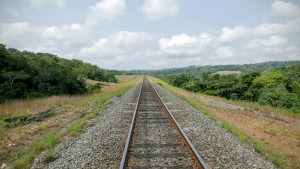 After crossing the river we meet a brand new railway line, which they’ve built to connect Libreville with Franceville. Apparently this railway almost bankrupted the country when the oil price dropped. It is quite fascinating that they have a currency union (Central African Franc pegged to Euro) with Cameroon and 12 other African countries. You would think that financially rather mismanaged countries would have bigger problems than we have in the Eurozone. The governments can’t just print money at their whim like they do in Nigeria for example. Given the peg it means practically we have a 14 country Eurozone extension in Africa.
After crossing the river we meet a brand new railway line, which they’ve built to connect Libreville with Franceville. Apparently this railway almost bankrupted the country when the oil price dropped. It is quite fascinating that they have a currency union (Central African Franc pegged to Euro) with Cameroon and 12 other African countries. You would think that financially rather mismanaged countries would have bigger problems than we have in the Eurozone. The governments can’t just print money at their whim like they do in Nigeria for example. Given the peg it means practically we have a 14 country Eurozone extension in Africa.
We coudn’t get to Lope in one day, but the river offered a kickass campsite.
Libreville to Lope reserve
New photo added to shared album
Lope is a major village with 20 huts and a railway station. Further down on the river edge we find a beautiful white man oasis – Hotel Lope, a project by African Eden. Its gardens and cute huts kick the ass of 5 star resorts.
We’ve been sleeping in the jungle for two weeks now, but other than hearing things happening in the night – we haven’t really seen any animals in the wild. We get a local guide in Lope to give a little tour into the park. There are buffalo, monkeys and elephants. To be honest, we hear many of their fanfare, but only see one elefant in the dusk. The mangos are ripe and they have gone from the savannah to the forests to feed on the fruit.
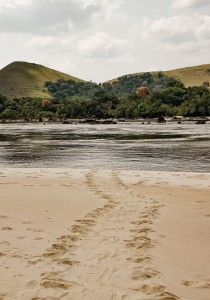 Later as we camp on the riverfront near the Lope hotel, we go scavanging their mango trees in the middle of the night. The ripe mangos are just incredible. The only problem with setting up tent this night are the evident crocodile tracks all around the beach, which Juka had been photographing during the day. We convince ourselves that crocodiles don’t like to eat humans, but still make sure that the feet aren’t sticking out of the tent tonight.
Later as we camp on the riverfront near the Lope hotel, we go scavanging their mango trees in the middle of the night. The ripe mangos are just incredible. The only problem with setting up tent this night are the evident crocodile tracks all around the beach, which Juka had been photographing during the day. We convince ourselves that crocodiles don’t like to eat humans, but still make sure that the feet aren’t sticking out of the tent tonight.
Check out his photos from this trip here. We had an early agreement that he writes a blog in Estonian and I do in English, but now he refuses to write any words next to the pictures, apparently it loses attention from the pictures. What a Tom Sawyer.
Over a month in Africa now, 17 days on the road. Now heading back to Libreville on the final ride of this leg of the trip. Best not ride too close to the trailer trucks.
